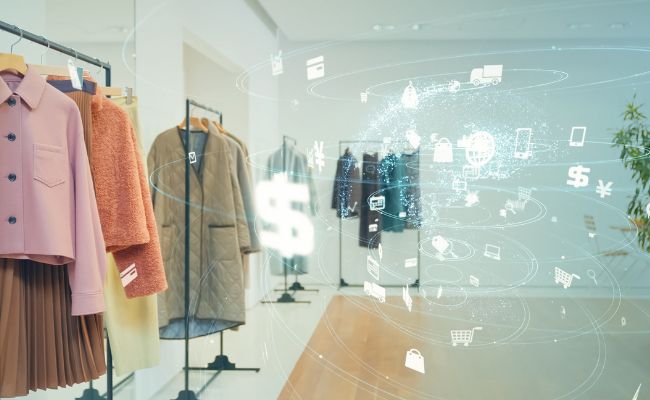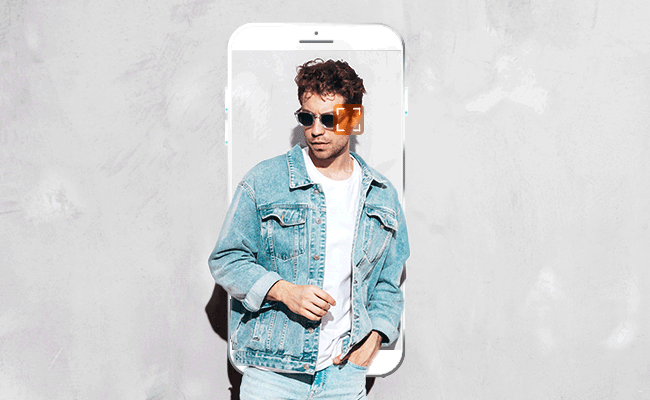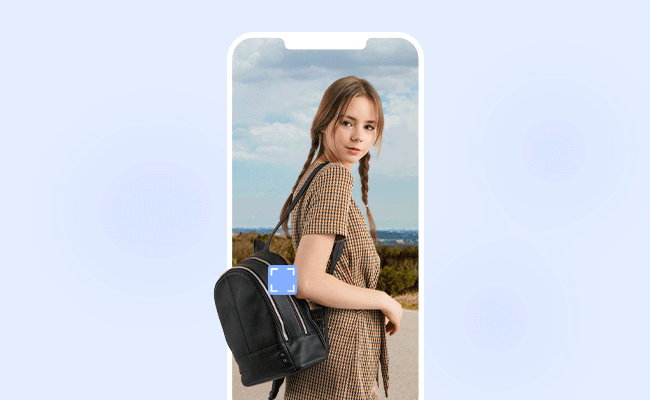
- June 14 2022
How Online Clothing Retailers Can Leverage AI in Retail
Artificial Intelligence (AI) is transforming industries and bringing a whole new mindset and way of working. It has the ability to automate processes, reduce costs, and turn vast amounts of data into actionable insights. Due to this, AI gives many companies a more productive way of working. Fashion is one of the industries benefiting from AI. Despite initial skepticism about the tech, fashion AI in retail has made many ecommerce stores more efficient, cost-effective, and profitable.
In this article, we’re diving deeper into artificial intelligence in retail. We also look at how it’s transforming the clothing industry. We’ve got some top ecommerce AI trends for you to consider and the tools available to help you transform your online store! Jump to what you’re looking for here:
- How AI is shaping the fashion retail industry
- 6 trends for AI in retail
- The benefits of using AI in ecommerce
- The future of artificial intelligence in the retail industry
First thing’s first, let’s take a look at how AI is transforming online retail.
How AI Is Shaping the Fashion Retail Industry

In 2022, the fashion industry is expected to hit a market worth $1.7 trillion. The industry is quickly recovering from a tricky couple of years. It is expected to reach between 103% and 108% of its 2019 size in 2022.
The fashion industry is one of the biggest in the world. It can also massively benefit from AI-powered automated processes. Thus, designers and businesses who embrace the newest technologies to push the boundaries of style, production, and distribution will gain the biggest competitive edge in the ever-changing fashion industry.
Here are some of the AI in retail use cases:
Smart Recommendations: AI fashion assistants that give product suggestions to customers based on shopper behavior. It is also based on the browsing and purchase history of similar shoppers.
AI-powered Chatbots: are able to take natural language questions from customers and respond with personalized answers. For example, Macy’s on Call trialed an in-store retail assistant for smartphones to improve the shopping experience. This can be replicated more easily in your online store.
Inventory Management: monitor inventory and determine which stores require specific items by tracking sales, refunds, and orders to improve efficiency and productivity.
The worldwide AI in the retail industry is predicted to grow from around $5 billion in 2021 to over $31 billion in 2028. All in all, if you haven’t been considering AI for your retailing day-to-day—you should be. Take a look at some of the hottest AI trends you need to try in 2022 to strengthen your business. These will also help you keep up with the industry’s shift towards AI-powered shopping.
6 Trends for AI in Retail
Here are some suggestions for how you can unite fashion and technology in the retail industry.
1. Emotion-Powered AI in Retail Customer Service
Modern customers demand customization at every step of the purchasing process. In fact, 80% of customers are more likely to buy from a firm that offers personalized experiences. To achieve this, you need a lot of data. You then need to convert this data into actionable insights.
However, gathering and interpreting data without AI is hard. You need to spend a lot of time cleaning and organizing it. This will likely take up a large portion of your team’s time. Doing it with AI is a whole other story—let’s consider emotion-based AI.
Emotional AI is a technology that perceives, learns from, and engages with human emotions using affective computing and artificial intelligence approaches. For example, retailers can use emotion AI to monitor consumer sentiments around your brand or products. This is similar to sentiment analysis but a lot more in-depth. You could use speech analysis to determine how successful conversations are, and whether the consumer is happy at the end of the call. This enables you to personalize customer service with insights even when customers don’t stick around to provide feedback.
2. Optimized Product Searches With an Improved Catalog
Natural language processing (NLP) refers to a computer program’s power to comprehend everyday human language. Traditional retail search engines have been rigid. Further, any slang or typo used by the customer resulted in no relevant results.
AI-powered search engines in ecommerce solve this problem. As a segment of AI that understands human language, NLP will help your search engine understand the context of the phrases people are using and provide relevant results.
You can also use AI for product catalog enrichment to make your product more searchable at scale. This can be done without the need for manual tagging. This helps consumers find what they’re looking for faster—regardless of typos or slang.

To make product search even more convenient, you can implement visual product search. We’ll talk more about this technology further in this article.
3. AR/VR Filters for an Enhanced Experience
Augmented reality (AR) and virtual reality (VR) are making their way into the fashion industry. From virtually trying on clothes to replicating in-store experiences—AR and VR are a key part of the future of retail.
For example, Burberry is one of them. They teamed up with artist Danny Sangra to produce ‘Burberry-inspired’ illustrations for an augmented reality feature. This included a dynamic brand elements in their iOS app. Users enhanced their scenery by overlaying Danny Sangra’s AR illustrations on their photos and then sharing the result on social media, generating ample UGC and brand awareness.
Shopping becomes more vivid, entertaining, and Instagram-able thanks to AR and VR merchandising strategies. Enhanced engagement rates equate to improved brand loyalty and revenue. Fashion retailers should consider incorporating augmented and virtual reality features into their network for a heightened retail experience.
4. Image Recognition and Visual Search for Easily Finding Products
Picture this: you’re sitting in a cafe, waiting for your friend to arrive. After a few minutes of waiting, you see her at the cafe entrance and she’s wearing this beautiful vintage skirt. You immediately want to buy it for yourself! But, she says she inherited it from her mother, and it was bought decades ago. So, what do you do?
Simple—AI-based image recognition powered search and visual search technologies enable you to find the skirt using a picture you take then and there. The store then returns a list of results that are most similar to the skirt you uploaded.
Despite the benefits that visual search has for product discoverability, many online stores still don’t offer visual search. It’s to their detriment—62% of millennials want visual search over any other new technology. Enabling customers to express their preferences via AI image search will enable you to motivate them with styles that meet their wants. It will also help you gain better shopper insights in order to ensure your online retail technology keeps up.
5. AI-Powered Price Optimization to Ensure You’re Up-To-Date
Ecommerce owners can leverage AI-powered pricing software to evaluate market trends and demands in order to set industry-informed prices.
The weather, time, competition, and trends—to mention a few—are all aspects that impact customer demand. Undoubtedly, AI can account for them all. AI can accurately evaluate and estimate demand using this data, and then recommend an optimal price based on it. Having adaptive pricing will enable you to adapt to the market. It will also help you keep better control of your stock, and attract more customers.
6. Personalized Product Recommendations for an Improved Experience
Fashion retailers can use personalized product recommendations to provide customers with suggestions based on a wide variety of data. This data comes from the previous browsing and click history. It further comes from items that other similar customer profiles browsed and bought, and the current page the customer is viewing. Personalized product recommendations help you reach the customer with a number of different suggestions:
Similar products to the items shoppers are browsing.
Related accessories such as handbags or sunglasses.
Other items in product pictures, such as the top to match the jeans.
Suggested alternatives to what they’re browsing.
Recommending products is one of the most influential AI solutions for retail. In fact, personalized product recommendations to drive sales can considerably boost average order value (AOV). They are also responsible for up to 29X return on investment.

The Benefits of Using AI in Retail
Increased Sales Numbers
AI-powered product discovery uses data like purchase history and customer preferences to show customers products they would like. With AI, you get the right products to the right customers at the right time. Showing relevant offerings can increase the overall value per order, boosting your sales numbers.
Improved Brand Loyalty & Customer Retention Rates
Delivering a personalized shopping experience to customers increases customer satisfaction and retention. In fact, according to McKinsey’s omnichannel personalization research, omnichannel personalization techniques can increase revenue and retention by 10-15%. AI helps you personalize the shopping experience for your users—encouraging them to stick around.
Give Your Team More Time
Inventory management and the way companies store products have been both transformed by AI. Fashion retailers can use AI technologies to automate inventory management. From auto-tagging clothes to monitoring stock flow—AI speeds things up.
For example, AI allows you to collect and understand data to identify the elements that lead to sales. With machine learning algorithms, you can process data to anticipate your inventory needs. This automation saves a lot of time for your team. It further allows them to focus on more essential work, like growing your business.
Identify Trending Items and Styles
With lots of data on hand, you’re in a better position to identify upcoming trends in your industry. Have searches for polka-dot sundresses quadrupled in the past week? Are you selling out of round-frame sunglasses faster than you can stock them? These insights enable you to predict the next big thing. They also allow you to manage your online store and inventory accordingly.
The Future of Artificial Intelligence in Retail Industry
These are some of the ways AI is making fashion retail more effective:
- AI Image Recognition
- Visual Search
- Automatic Tagging
- Product Recommendations
- Intelligent Style Assistants
- Personalized Shopping Experiences
- Predictive Analytics
All these tools can be game-changers for fashion retailers. Through these, they can level up personalization and the use of data. Hence, cutting time and costs spent for repetitive tasks. Here are some of the clothing brands currently using AI:
- Mango
- Macy’s
- Zalora
- Urban Outfitters
- Tod’s
- H&M
- Tommy Hilfiger
- ASOS
All things considered, the cut, color, or style doesn’t matter. The vast majority of people wear clothes every single day. Fashion is here for the long run. From the manufacturing process to the shopping experience, AI has the power to revolutionize the online clothing retail industry. All in all, it enables companies to learn and make changes in order to provide the best customer experience possible.
Try ViSenze Today to start putting these ecommerce merchandising tips to use and find out how you can leverage AI and machine learning in your online retailing business.
After all—if not now, when?

